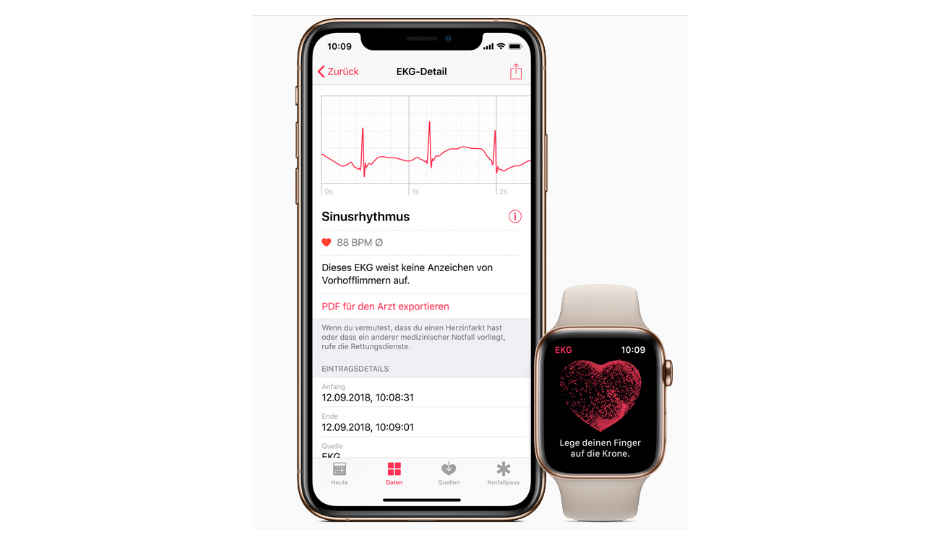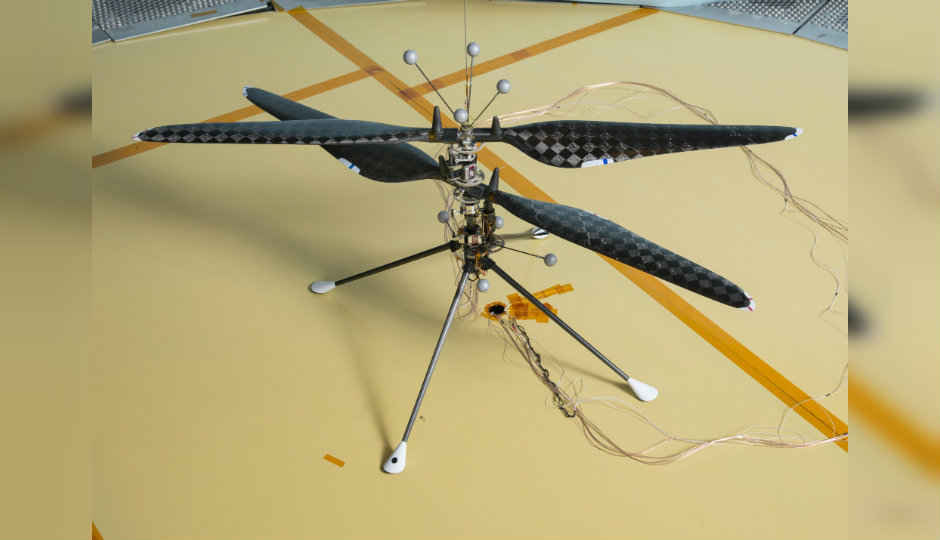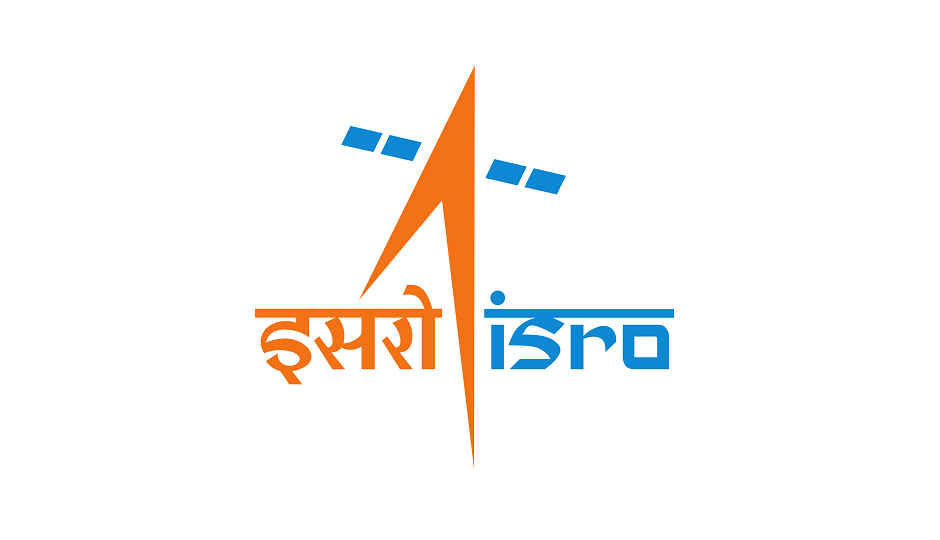 Highlights: watchOS 5.2 brings ECG and irregular rhythm notification to hong Kong and 19 European countries. The update is rolled out for all compatible Apple Watches. It also brings support for AirPods 2. Apple has rolled out the watchOS 5.2 software update to all compatible Apple Watches, and it brings the ECG app and irregular rhythm notification to Hong Kong and 19 European markets including Austria, Belgium, Denmark, Finland, France, Germany, Greece, Hungary, Ireland, Italy, Luxembourg, Netherlands, Norway, Portugal, Romania, Spain, Sweden, Switzerland, and the UK. Apart from this, the latest update also brings the AirPods 2 support that will let users to use it with the Apple Watch. The expansion means that in addition to receiving De Novo clearance in the US from the FDA, the ECG app and irregular rhythm notification are now CE marked giving it a clearance in the European Economic Area. The ECG feature on Apple Watch Series 4 enables customers to take an electrocardiogram from their wrist. The ECG app can capture heart rhythm and alert users if and when they experience a rapid or skipped heart beat. Apple says that the watch can provide clinically important data to physicians. Meanwhile, the irregular rhythm notification feature on Apple Watch occasionally checks heart rhythm in the background and sends a notification if an irregular heart rhythm that appears to be atrial fibrillation (AFib) is identified. If left untreated, the AFib could result in stroke. “We’ve seen the ECG app and irregular rhythm notifications on Apple Watch have meaningful impact on our customers across the US and are excited to bring these features to customers in Europe and Hong Kon,” Jeff Williams, Apple’s Chief Operating Officer, said in a statement. According to a clinical trial of around 600 participants, the ECG app on Apple Watch demonstrated 98.3 percent sensitivity in classifying AFib and 99.6 percent specificity in classifying sinus rhythm in classifiable recordings when compared to a gold standard 12-lead ECG administered by a cardiologist. 87.8 percent of recordings in the study could be classified by the ECG app. Meanwhile, the irregular rhythm notification feature was recently studied in the Apple Heart Study. Released earlier this month, the study found that “only 0.5 percent of participants received irregular pulse notifications, an important finding given concerns about potential over-notification.” With over 400,000 participants, the study further found evidence to support wearable technology has the ability to safely identify heart rate irregularities. Related Read: ECG Sensor on the Apple Watch Series 4 saves a life within days of launch Apple Watch Series 4's Fall Detection feature is turned off be default unless you're over 65
Highlights: watchOS 5.2 brings ECG and irregular rhythm notification to hong Kong and 19 European countries. The update is rolled out for all compatible Apple Watches. It also brings support for AirPods 2. Apple has rolled out the watchOS 5.2 software update to all compatible Apple Watches, and it brings the ECG app and irregular rhythm notification to Hong Kong and 19 European markets including Austria, Belgium, Denmark, Finland, France, Germany, Greece, Hungary, Ireland, Italy, Luxembourg, Netherlands, Norway, Portugal, Romania, Spain, Sweden, Switzerland, and the UK. Apart from this, the latest update also brings the AirPods 2 support that will let users to use it with the Apple Watch. The expansion means that in addition to receiving De Novo clearance in the US from the FDA, the ECG app and irregular rhythm notification are now CE marked giving it a clearance in the European Economic Area. The ECG feature on Apple Watch Series 4 enables customers to take an electrocardiogram from their wrist. The ECG app can capture heart rhythm and alert users if and when they experience a rapid or skipped heart beat. Apple says that the watch can provide clinically important data to physicians. Meanwhile, the irregular rhythm notification feature on Apple Watch occasionally checks heart rhythm in the background and sends a notification if an irregular heart rhythm that appears to be atrial fibrillation (AFib) is identified. If left untreated, the AFib could result in stroke. “We’ve seen the ECG app and irregular rhythm notifications on Apple Watch have meaningful impact on our customers across the US and are excited to bring these features to customers in Europe and Hong Kon,” Jeff Williams, Apple’s Chief Operating Officer, said in a statement. According to a clinical trial of around 600 participants, the ECG app on Apple Watch demonstrated 98.3 percent sensitivity in classifying AFib and 99.6 percent specificity in classifying sinus rhythm in classifiable recordings when compared to a gold standard 12-lead ECG administered by a cardiologist. 87.8 percent of recordings in the study could be classified by the ECG app. Meanwhile, the irregular rhythm notification feature was recently studied in the Apple Heart Study. Released earlier this month, the study found that “only 0.5 percent of participants received irregular pulse notifications, an important finding given concerns about potential over-notification.” With over 400,000 participants, the study further found evidence to support wearable technology has the ability to safely identify heart rate irregularities. Related Read: ECG Sensor on the Apple Watch Series 4 saves a life within days of launch Apple Watch Series 4's Fall Detection feature is turned off be default unless you're over 65from Latest Technology News https://ift.tt/2OvfNpz
 Highlights: A researcher blames Asus for attack on their software update utility. He claims that company employees shared passwords on Github which gave hackers access to company’s corporate network. Apparently, Asus got a heads up two months before the attack was executed. Asus is being held responsible for the attack on its software update utility that was hacked to install malware on thousands of computers. A researcher has claimed that an Asus employee left passwords on code-sharing platform GitHub that gave hackers access to company’s corporate network. Moreover, it is also being claimed that the Taiwanese tech company was warned two months before the attack was executed. Citing a security researcher, who goes by name SchizoDuckie, Tech Crunch reported that Asus was warned two months ago that employees were “improperly publishing passwords in their GitHub repositories” that could be used to access the company’s corporate network. A password was found in an employee repo which allowed the researcher to access an email account used by internal developers and engineers to share nightly builds of apps, drivers and tools to computer owners. The researcher claims that the repo in question was owned by an Asus engineer who left the email account’s passwords publicly exposed for at least a year. “It was a daily release mailbox where automated builds were sent,” the researcher was quoted as saying. He also said that the emails in the mailbox of that employee had the exact internal network path where drivers and files were stored, which apparently made it easy for attackers to execute the plan. “All you’d need is send one of those emails with an attachment to any of the recipients for a real nice spearphishing attack,” he said, adding, “Companies have no clue what their programmers do with their code on GitHub.” TechCrunch claims that a day after the company was alerted about the researcher’s email, the repos containing the credentials were pulled offline and wiped clean. However, Asus spokesperson Randall Grilli said that the computer maker was “unable to verify the validity” of the claims in the researcher’s emails. Asus has already released a fix for the issue. “We have updated and strengthened our server-to-end-user software architecture to prevent similar attacks from happening in the future. Additionally, we have created an online security diagnostic tool to check for affected systems, and we encourage users who are still concerned to run it as a precaution,” Asus told Digit in a statement. Related Read: NotPetya is a wiper, not ransomware: Here's what that means 4% of Indian users attacked by banking Trojans in 2018: Kaspersky Lab
Highlights: A researcher blames Asus for attack on their software update utility. He claims that company employees shared passwords on Github which gave hackers access to company’s corporate network. Apparently, Asus got a heads up two months before the attack was executed. Asus is being held responsible for the attack on its software update utility that was hacked to install malware on thousands of computers. A researcher has claimed that an Asus employee left passwords on code-sharing platform GitHub that gave hackers access to company’s corporate network. Moreover, it is also being claimed that the Taiwanese tech company was warned two months before the attack was executed. Citing a security researcher, who goes by name SchizoDuckie, Tech Crunch reported that Asus was warned two months ago that employees were “improperly publishing passwords in their GitHub repositories” that could be used to access the company’s corporate network. A password was found in an employee repo which allowed the researcher to access an email account used by internal developers and engineers to share nightly builds of apps, drivers and tools to computer owners. The researcher claims that the repo in question was owned by an Asus engineer who left the email account’s passwords publicly exposed for at least a year. “It was a daily release mailbox where automated builds were sent,” the researcher was quoted as saying. He also said that the emails in the mailbox of that employee had the exact internal network path where drivers and files were stored, which apparently made it easy for attackers to execute the plan. “All you’d need is send one of those emails with an attachment to any of the recipients for a real nice spearphishing attack,” he said, adding, “Companies have no clue what their programmers do with their code on GitHub.” TechCrunch claims that a day after the company was alerted about the researcher’s email, the repos containing the credentials were pulled offline and wiped clean. However, Asus spokesperson Randall Grilli said that the computer maker was “unable to verify the validity” of the claims in the researcher’s emails. Asus has already released a fix for the issue. “We have updated and strengthened our server-to-end-user software architecture to prevent similar attacks from happening in the future. Additionally, we have created an online security diagnostic tool to check for affected systems, and we encourage users who are still concerned to run it as a precaution,” Asus told Digit in a statement. Related Read: NotPetya is a wiper, not ransomware: Here's what that means 4% of Indian users attacked by banking Trojans in 2018: Kaspersky Lab Highlights The Mars Helicopter is scheduled to launch alongside the Mars Rover in 2020. It is a technology demonstrator and researchers hope to complete flights of 90 seconds on Mars. Researchers had to replicate the thin Martian atmosphere and lower gravitational pull here on Earth. Next year, NASA is set to launch a new mission to Mars. This time around, the US space agency plans to send a rover as well as a small helicopter. The team behind the helicopter has announced that they have compete test flights while simulating martian conditions. The Martian atmosphere as well as gravitational pull is very different than that on earth, so the team had to replicate those conditions in order to prove that their helicopter would be capable of flight. "Gearing up for that first flight on Mars, we have logged over 75 minutes of flying time with an engineering model, which was a close approximation of our helicopter," said MiMi Aung, project manager for the Mars Helicopter at NASA's Jet Propulsion Laboratory. "But this recent test of the flight model was the real deal. This is our helicopter bound for Mars. We needed to see that it worked as advertised." The helicopter itself weighs 1.8Kg, and in order to test it. Aung’s team had to mimic Martian conditions here on earth. They did this by using a 25 foot wide, (7.62m) vacuum chamber that sucked out all the air, and then injected carbon dioxide, the main ingredient of Mars’ atmosphere. The atmosphere was only one aspect, the second was to mimic the lower gravity on Mars. The researchers did so by using a ‘gravity offload system’, which is a motorized lanyard attached to the top of the helicopter. This would provide an “uninterrupted” tug equivalent to two-thirds of Earth’s gravitational pull. The team says that a hover of 5cm enough for them to obtain the data sets needed to confirm that the Mars Helicopter would fly autonomously as designed. "The next time we fly, we fly on Mars," said Aung. "Watching our helicopter go through its paces in the chamber, I couldn't help but think about the historic vehicles that have been in there in the past. The chamber hosted missions from the Ranger Moon probes to the Voyagers to Cassini, and every Mars rover ever flown. To see our helicopter in there reminded me we are on our way to making a little chunk of space history as well." [sic] The Mars Helicopter and the Mars 2020 rover will be launched aboard a United Launch Alliance Atlas V rocket in July 2020. It is expected to reach Mars in February 2021. The Mars Helicopter would launch as a technology demonstrator. After landing on Mars, it will be deployed and test flights of up to 90 seconds long will begin, a first from the surface of another planet. Recommended read NASA's Opportunity Rover Mission on Mars concluded after 15 years of exploration
Highlights The Mars Helicopter is scheduled to launch alongside the Mars Rover in 2020. It is a technology demonstrator and researchers hope to complete flights of 90 seconds on Mars. Researchers had to replicate the thin Martian atmosphere and lower gravitational pull here on Earth. Next year, NASA is set to launch a new mission to Mars. This time around, the US space agency plans to send a rover as well as a small helicopter. The team behind the helicopter has announced that they have compete test flights while simulating martian conditions. The Martian atmosphere as well as gravitational pull is very different than that on earth, so the team had to replicate those conditions in order to prove that their helicopter would be capable of flight. "Gearing up for that first flight on Mars, we have logged over 75 minutes of flying time with an engineering model, which was a close approximation of our helicopter," said MiMi Aung, project manager for the Mars Helicopter at NASA's Jet Propulsion Laboratory. "But this recent test of the flight model was the real deal. This is our helicopter bound for Mars. We needed to see that it worked as advertised." The helicopter itself weighs 1.8Kg, and in order to test it. Aung’s team had to mimic Martian conditions here on earth. They did this by using a 25 foot wide, (7.62m) vacuum chamber that sucked out all the air, and then injected carbon dioxide, the main ingredient of Mars’ atmosphere. The atmosphere was only one aspect, the second was to mimic the lower gravity on Mars. The researchers did so by using a ‘gravity offload system’, which is a motorized lanyard attached to the top of the helicopter. This would provide an “uninterrupted” tug equivalent to two-thirds of Earth’s gravitational pull. The team says that a hover of 5cm enough for them to obtain the data sets needed to confirm that the Mars Helicopter would fly autonomously as designed. "The next time we fly, we fly on Mars," said Aung. "Watching our helicopter go through its paces in the chamber, I couldn't help but think about the historic vehicles that have been in there in the past. The chamber hosted missions from the Ranger Moon probes to the Voyagers to Cassini, and every Mars rover ever flown. To see our helicopter in there reminded me we are on our way to making a little chunk of space history as well." [sic] The Mars Helicopter and the Mars 2020 rover will be launched aboard a United Launch Alliance Atlas V rocket in July 2020. It is expected to reach Mars in February 2021. The Mars Helicopter would launch as a technology demonstrator. After landing on Mars, it will be deployed and test flights of up to 90 seconds long will begin, a first from the surface of another planet. Recommended read NASA's Opportunity Rover Mission on Mars concluded after 15 years of exploration  Highlight: The Huawei P30 Pro became the subject of Xiaomi's trolling on two Facebook. Xiaomi took a dig at the pricing and the specs of the Huawei P30, comparing it against the Xiaomi Mi 9. The Huawei P30 comes with a triple-camera system along with flagship hardware like a 7nm Kirin 980 SoC, 6GB RAM and 128GB storage. The Huawei P30 series recently launched at an event in Paris where Huawei marketed the flagship that revolutionises the camera. But the company couldn’t escape the ire of Xiaomi’s social media trolling after the P30 Pro became the latest target in a series of such trolls where Xiaomi took on Samsung, Apple and even OnePlus. In a Facebook post, Xiaomi took a potshot at at the Huawei P30 series, especially the pricing of the phones showing a screenshot from the livestream, with the caption, “is this really necessary?”. Not stopping there, Xiaomi posted another photo comparing the specs and price of the Xiaomi Mi 9 and the Huawei P30, along with a caption, “we really believe in giving you amazing products at #HonestPrices. Do you think a flagship smartphone should cost a fortune? #Mi9?” The P30 series which has the Huawei P30 Pro and the P30, launched at an event last week in Paris. The P30 Pro and the P30 come with the flagship Kirin 980 SoC under the hood featuring dual NPUs. The P30 Pro packs a bigger 6.47-inch AMOLED Panel with 8GB RAM and up to 512GB storage. Meanwhile, the P30 has a 6.1-inch AMOLED panel with 6GB RAM and 128GB storage. The highlight of the series, however, are the camera systems on the back of the phones. The Huawei P30 Pro comes with a quad-camera setup with a 40MP, 20MP, and 8MP sensor along with a ToF 3D sensor. There’s also a 32MP front camera. The Huawei P30 also sports a similar setup, sans the ToF sensor. The Xiaomi Mi 9 also comes close in terms of the hardware offered in the Huawei P30 with a 6.39-inch AMOLED panel, Snapdragon 855 SoC and a triple camera setup housing a 48MP sensor along with a 12MP and a 16MP camera. Both phones also come with an in-display fingerprint sensor, but the Mi 9 takes the lead with 20W fast wireless charging while the Huawei P30 doesn’t have wireless charging. But perhaps, the biggest point which Xiaomi can raise against the P30 is the price. The Xiaomi Mi 9 is modestly priced at 499 Euros (roughly Rs 38,000) while the Huawei P30 is priced at 799 Euros (roughly Rs 62,000). That’s almost double the price of Xiaomi’s flagship! Related Read: Huawei P30 Pro first impressions: more zoom than ever before
Highlight: The Huawei P30 Pro became the subject of Xiaomi's trolling on two Facebook. Xiaomi took a dig at the pricing and the specs of the Huawei P30, comparing it against the Xiaomi Mi 9. The Huawei P30 comes with a triple-camera system along with flagship hardware like a 7nm Kirin 980 SoC, 6GB RAM and 128GB storage. The Huawei P30 series recently launched at an event in Paris where Huawei marketed the flagship that revolutionises the camera. But the company couldn’t escape the ire of Xiaomi’s social media trolling after the P30 Pro became the latest target in a series of such trolls where Xiaomi took on Samsung, Apple and even OnePlus. In a Facebook post, Xiaomi took a potshot at at the Huawei P30 series, especially the pricing of the phones showing a screenshot from the livestream, with the caption, “is this really necessary?”. Not stopping there, Xiaomi posted another photo comparing the specs and price of the Xiaomi Mi 9 and the Huawei P30, along with a caption, “we really believe in giving you amazing products at #HonestPrices. Do you think a flagship smartphone should cost a fortune? #Mi9?” The P30 series which has the Huawei P30 Pro and the P30, launched at an event last week in Paris. The P30 Pro and the P30 come with the flagship Kirin 980 SoC under the hood featuring dual NPUs. The P30 Pro packs a bigger 6.47-inch AMOLED Panel with 8GB RAM and up to 512GB storage. Meanwhile, the P30 has a 6.1-inch AMOLED panel with 6GB RAM and 128GB storage. The highlight of the series, however, are the camera systems on the back of the phones. The Huawei P30 Pro comes with a quad-camera setup with a 40MP, 20MP, and 8MP sensor along with a ToF 3D sensor. There’s also a 32MP front camera. The Huawei P30 also sports a similar setup, sans the ToF sensor. The Xiaomi Mi 9 also comes close in terms of the hardware offered in the Huawei P30 with a 6.39-inch AMOLED panel, Snapdragon 855 SoC and a triple camera setup housing a 48MP sensor along with a 12MP and a 16MP camera. Both phones also come with an in-display fingerprint sensor, but the Mi 9 takes the lead with 20W fast wireless charging while the Huawei P30 doesn’t have wireless charging. But perhaps, the biggest point which Xiaomi can raise against the P30 is the price. The Xiaomi Mi 9 is modestly priced at 499 Euros (roughly Rs 38,000) while the Huawei P30 is priced at 799 Euros (roughly Rs 62,000). That’s almost double the price of Xiaomi’s flagship! Related Read: Huawei P30 Pro first impressions: more zoom than ever before Highlights: Poco F1 leapfrogs OnePlus to become top selling phone online in Rs 15,000 and above segment in Q42018. It captured 22.4% share while OnePlus captured 17.9%. Xiaomi's Poco F1 has become the top selling smartphone in online market space in the Rs 15,000 and above segment with 22.4 percent share in the fourth quarter of 2018. Citing International Data Corporation (IDC), Manu Jain, Managing Director at Xiaomi India, tweeted the development taking potshots at its Chinese rival OnePlus that captured the second spot with 17.9 percent share in the same quarter. When Digit reached out to IDC, the market research firm confirmed the development. “The Poco F1 brought all the specifications that OnePlus has at a very affordable price. People were looking for a powerful device and they didn't want to spend much on it. Poco F1's specs are on par with the OnePlus’ latest flagship, and when a customer goes online, price as well as the performance is considered by a customer. Being the first model of the series, I think this is an achievement for Poco,” Navkendar Singh, Research Director, IDC India, told Digit. Meanwhile, Jain also offered people a chance to win a Poco F1 device. “Now it's settled! As per @IDC, #POCOF1 is India's #1 Smartphone in online smartphone market of ₹15k & above. The Champion of Speed doesn't settle for 2nd place. Nor should you! RT my tweet + Tweet with #POCOF1, tell me why you love this beast (tag me). 1 fan to win a POCO F1!", the executive said in his tweet. This is not the first time that Xiaomi has targeted a rival smartphone brand. Last year, the company trolled OnePlus at OnePlus 6T launched event in Delhi with ‘Do the math’ campaign. It highlighted how the Poco F1 is a much better buy than the “overpriced” OnePlus 6T. Poco F1 was launched as the cheapest Snapdragon 845 smartphone in the world starting at Rs 20,999. Xiaomi announced the “OP bundle” where users were offered the Poco F1, along with seven other Xiaomi products, at the price of ne OnePlus 6T smartphone. The Poco F1 is offered in three variants 6GB RAM + 64GB storage, 6GB RAM + 128GB storage and an 8GB RAM + 256GB storage version. Earlier this week, Xiaomi introduced a temporary price cut on the 6GB RAM + 128GB storage version and sold the phone at a price of Rs 20,999, which is down from its launch price of Rs 23,999. The company also added the Game Turbo option in MIUI for the POCO F1. The new Game Turbo mode was announced earlier this month, and is similar to the Game Booster mode seen on several other devices. The feature aims at delivering a consistent frame rate while gaming. It works by clearing background applications and freeing memory for the app running in the foreground. It also comes with options to capture gameplay footage or screenshots and there are quick toggle switches to enable/disable Wi-Fi and more. Related Read: Xiaomi gets largest market share in India, exits 2018 with highest ever shipments: IDC Now it's settled! As per @IDC, #POCOF1 is India's #1 Smartphone in online smartphone market of ₹15k & above. The Champion of Speed doesn't settle for 2nd place. Nor should you! RT my tweet + Tweet with #POCOF1, tell me why you love this beast (tag me). 1 fan to win a POCO F1! pic.twitter.com/fDjDM8hfpk — Manu Kumar Jain (@manukumarjain) 27 March 2019
Highlights: Poco F1 leapfrogs OnePlus to become top selling phone online in Rs 15,000 and above segment in Q42018. It captured 22.4% share while OnePlus captured 17.9%. Xiaomi's Poco F1 has become the top selling smartphone in online market space in the Rs 15,000 and above segment with 22.4 percent share in the fourth quarter of 2018. Citing International Data Corporation (IDC), Manu Jain, Managing Director at Xiaomi India, tweeted the development taking potshots at its Chinese rival OnePlus that captured the second spot with 17.9 percent share in the same quarter. When Digit reached out to IDC, the market research firm confirmed the development. “The Poco F1 brought all the specifications that OnePlus has at a very affordable price. People were looking for a powerful device and they didn't want to spend much on it. Poco F1's specs are on par with the OnePlus’ latest flagship, and when a customer goes online, price as well as the performance is considered by a customer. Being the first model of the series, I think this is an achievement for Poco,” Navkendar Singh, Research Director, IDC India, told Digit. Meanwhile, Jain also offered people a chance to win a Poco F1 device. “Now it's settled! As per @IDC, #POCOF1 is India's #1 Smartphone in online smartphone market of ₹15k & above. The Champion of Speed doesn't settle for 2nd place. Nor should you! RT my tweet + Tweet with #POCOF1, tell me why you love this beast (tag me). 1 fan to win a POCO F1!", the executive said in his tweet. This is not the first time that Xiaomi has targeted a rival smartphone brand. Last year, the company trolled OnePlus at OnePlus 6T launched event in Delhi with ‘Do the math’ campaign. It highlighted how the Poco F1 is a much better buy than the “overpriced” OnePlus 6T. Poco F1 was launched as the cheapest Snapdragon 845 smartphone in the world starting at Rs 20,999. Xiaomi announced the “OP bundle” where users were offered the Poco F1, along with seven other Xiaomi products, at the price of ne OnePlus 6T smartphone. The Poco F1 is offered in three variants 6GB RAM + 64GB storage, 6GB RAM + 128GB storage and an 8GB RAM + 256GB storage version. Earlier this week, Xiaomi introduced a temporary price cut on the 6GB RAM + 128GB storage version and sold the phone at a price of Rs 20,999, which is down from its launch price of Rs 23,999. The company also added the Game Turbo option in MIUI for the POCO F1. The new Game Turbo mode was announced earlier this month, and is similar to the Game Booster mode seen on several other devices. The feature aims at delivering a consistent frame rate while gaming. It works by clearing background applications and freeing memory for the app running in the foreground. It also comes with options to capture gameplay footage or screenshots and there are quick toggle switches to enable/disable Wi-Fi and more. Related Read: Xiaomi gets largest market share in India, exits 2018 with highest ever shipments: IDC Now it's settled! As per @IDC, #POCOF1 is India's #1 Smartphone in online smartphone market of ₹15k & above. The Champion of Speed doesn't settle for 2nd place. Nor should you! RT my tweet + Tweet with #POCOF1, tell me why you love this beast (tag me). 1 fan to win a POCO F1! pic.twitter.com/fDjDM8hfpk — Manu Kumar Jain (@manukumarjain) 27 March 2019 Highlights: ISRO will choose three 9th standard students for a two-week special programme. Chosen students will get to meet eminent ISRO scientists and tour various ISRO labs and facilities. ISRO will pay for the transportation and accommodation of the chosen students. Registrations for the programme are currently open and close on April 3. The Indian Space Research Organisation (ISRO) has quietly launched a special programme for school students called “Yuva Vigyani Karyakram”. Shortened to “Yuvika” or also referred to as Young Scientist Programme, the new ISRO initiative will play host to a small selection of young high school students aspiring to become scientists during their summer holidays in May. Registrations are currently open and close on April 3. The space agency will invite three chosen students from each state or union territory for a two-week-long all-expenses-paid tour to an ISRO centre, where they will get a chance to be included in exclusive talks, meet and hear from eminent scientists, and tour labs and other ISRO facilities. The programme is limited to students who have completed the 9th standard of school and are currently waiting to start the 10th standard. Though the national space agency has arranged this special programme for young space science-inclined students in an effort to “catch them young” and encourage them to study space science in the future, ISRO has a few conditions, which are mentioned on the online registration page. ISRO will choose three students from each state or union territory in the country for the programme based on their performance in the 8th standard and other related academic parametres. “Students belonging to the rural area have been given special weightage in the selection criteria. In case there is tie between the selected candidates, the younger candidates will be given priority,” ISRO clarifies. “The selected students will be accommodated in ISRO guest houses/hostels.” In addition to paying for the students’ transportation and accommodation, ISRO will pay for the train fare of one parent or guardian accompanying them on their journey to the ISRO centre. Useful links: ISRO Yuvika Information Page ISRO Yuvika FAQ page Related Read: Mission Shakti: PM Modi wants draft space doctrine prepared around ASAT missile: Report Mission Shakti: India demonstrates anti-satellite (ASAT) weapon, becomes fourth space warfare-ready country
Highlights: ISRO will choose three 9th standard students for a two-week special programme. Chosen students will get to meet eminent ISRO scientists and tour various ISRO labs and facilities. ISRO will pay for the transportation and accommodation of the chosen students. Registrations for the programme are currently open and close on April 3. The Indian Space Research Organisation (ISRO) has quietly launched a special programme for school students called “Yuva Vigyani Karyakram”. Shortened to “Yuvika” or also referred to as Young Scientist Programme, the new ISRO initiative will play host to a small selection of young high school students aspiring to become scientists during their summer holidays in May. Registrations are currently open and close on April 3. The space agency will invite three chosen students from each state or union territory for a two-week-long all-expenses-paid tour to an ISRO centre, where they will get a chance to be included in exclusive talks, meet and hear from eminent scientists, and tour labs and other ISRO facilities. The programme is limited to students who have completed the 9th standard of school and are currently waiting to start the 10th standard. Though the national space agency has arranged this special programme for young space science-inclined students in an effort to “catch them young” and encourage them to study space science in the future, ISRO has a few conditions, which are mentioned on the online registration page. ISRO will choose three students from each state or union territory in the country for the programme based on their performance in the 8th standard and other related academic parametres. “Students belonging to the rural area have been given special weightage in the selection criteria. In case there is tie between the selected candidates, the younger candidates will be given priority,” ISRO clarifies. “The selected students will be accommodated in ISRO guest houses/hostels.” In addition to paying for the students’ transportation and accommodation, ISRO will pay for the train fare of one parent or guardian accompanying them on their journey to the ISRO centre. Useful links: ISRO Yuvika Information Page ISRO Yuvika FAQ page Related Read: Mission Shakti: PM Modi wants draft space doctrine prepared around ASAT missile: Report Mission Shakti: India demonstrates anti-satellite (ASAT) weapon, becomes fourth space warfare-ready country